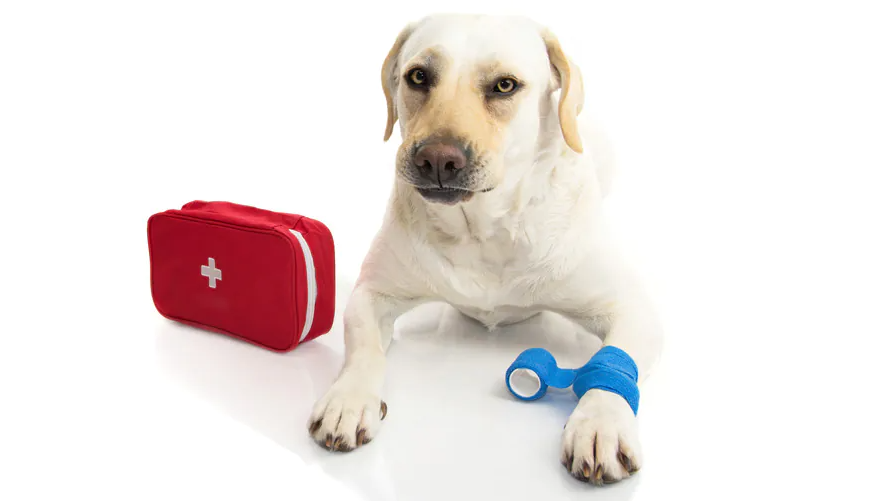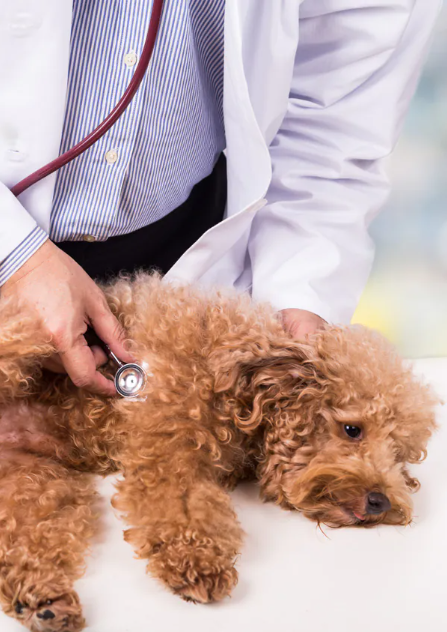Convulsions in dogs, especially those that started for the first time and suddenly, always cause increased anxiety among owners. This is not surprising, because convulsions cannot appear spontaneously, there is always some reason that provoked their occurrence. In this article we will try to figure out why dogs have seizures.
What are dog cramps
Convulsions in animals are considered to be muscle contractions, accompanied by pain, and sometimes loss of consciousness. The cause of seizures is brain disorders. The spasms that cause the dog’s body to shake are divided into types:

- Tonic convulsions – as a rule, these are convulsions of the hind legs of a dog, when a spasm keeps the muscles in one position for a long time (the dog’s limb is either stretched or bent);
- Clonic convulsions are short–term contractions that alternate with the relaxation phase, and then repeat again;
- Epileptic seizures – the dog is unconscious, profuse salivation (or foam) from the mouth. The whole body twitches violently in convulsions;
- Convulsions – abrupt contraction of usually all muscles (the dog, without losing consciousness, twitches his whole body).
At the same time, if convulsions affect only some muscles (for example, the muscles of the forelimbs), then they are called localized. And if the whole body of the dog is captured in the power of spasms, then the convulsions are called generalized.
Seizures can develop in dogs of any age, any breed. However, more often muscle spasms are observed:
- In miniature pets, especially in males (seizures in small dogs and in dog boys are more common than in large ones due to their predisposition to epilepsy, in addition, euclampsia – a lack of calcium, as well as hypoglycemia – a lack of glucose – is often found in baby pets);
- Dachshunds, poodles, collies, huskies, labradors (dogs of these breeds have epilepsy more often than others).
Why a dog may have seizures
It should be noted that strong muscle contractions never appear by chance. Spasms are symptoms of any serious ailments. Consider the causes of seizures in a dog:

- Epilepsy – (hereditary or acquired as a result of head injuries, infectious ailments, tumors, etc.). With epilepsy, a doggie can have not only a real seizure with loss of consciousness, but also involuntary incontinence of urine or feces, foam (saliva) from a tightly closed mouth, eyes can rush to one point (gaze in nowhere);
- Poisoning – (for example, arsenic, rat poison, chemicals for the destruction of insect pests, etc.). If an animal has swallowed something inedible and toxic, then in addition to convulsions, there may be such symptoms: difficulty breathing, vomiting and diarrhea, pallor of mucous membranes, bleeding, weakness;
- Complication of diabetes mellitus (hypoglycemia) – with acute glucose deficiency, a dog may develop severe convulsions with loss of consciousness, paralysis of the limbs and even coma. In milder cases, the animal has convulsions without loss of consciousness, foam from the mouth, lethargy, chills;
- Infectious diseases (viruses, bacteria, fungi) – it is difficult to list all the ailments that can cause seizures. Usually muscle spasms occur with ehrlichiosis (after a tick bite), infectious enteritis, coronavirus infection, leptospirosis and many other ailments. Often infectious diseases cause not only convulsions, but also an increase in body temperature, discharge from the nose and eyes, gastrointestinal disorders, weakness, refusal of food (and sometimes water);
- Inflammatory processes in the internal organs of a non–infectious nature – if the dog is cramped, then the cause of this condition may lie, for example, in nephritis, meningitis, hepatitis and other ailments, the symptoms of which vary depending on which organ is affected;
- Metabolic disorders – in animals with problems with metabolism, both involuntary convulsions and overweight, thirst, digestive disorders, palpitations, skin problems, fatigue occur;
- Heart disease – heart dogs can not only have seizures, but also frequent painful cough, shortness of breath even after a minor run, cyanosis of the tongue and mucous membranes;
- Oncoprocesses of the brain – with cancer, animals can have severe muscle spasms, shaky gait, unconventional behavior (the dog does not recognize the owner, becomes too aggressive or affectionate, etc.), lack of appetite, vomiting, weight loss.
How to behave if the dog has seizures
So, as we found out, muscle spasms do not start from scratch (light twitching of the limbs during sleep does not count). In a good way, the animal should be shown to the veterinarian after the first attack. But what to do directly at the moment when the pet’s body was convulsed? The owner is required to do so:

- Having discarded panic, carefully observe which muscle groups of the animal cramped (the whole body, front or rear limbs), whether the dog lost consciousness. This information will help the doctor in the future to determine what the dog is sick with;
- If the animal is lying on a hill (for example, on a sofa), it should be moved to the floor as soon as possible, preferably on a pillow in order to avoid head injury and choking with saliva;
- It will be easier for the dog to breathe on the right side;
- During a seizure, you do not need to put fingers or a spoon in the dog’s mouth. Animals, even during an epileptic seizure, are not able to swallow their own tongue;
- With canine convulsions, you do not need to shout loudly (it is advisable to turn off the radio and TV). It is believed that noise only aggravates the condition of an animal affected by body spasm;
- First aid for convulsions – the use of Valocordin drops, which will help the dog to recover as soon as possible (the drug is dripped onto the animal’s tongue);
- You can stop muscle spasms with injections of magnesium sulfate (but only after consultation with a veterinarian!);
- A dog that has come to its senses should not be fed immediately, but the animal should be given plenty of water to drink;
- Treatment of seizures in dogs with serious drugs (“Phenobarbital”, “Diazepam”, etc.) can be started only after a visit to the vet clinic. Self-medication will not only not heal the pet, but will bring him additional torment.
- The duration of the attack is more than 10 minutes (usually muscle spasm passes after 1-5 minutes);
- If the dog has lost consciousness;
- If the condition of the dog even before the convulsions caused concerns (diarrhea, vomiting, refusal to eat, heavy breathing, etc.);
- When convulsions cover the animal again and again (more often 2 times a day);
- If the dog has severe chronic diseases, is in puppy or senile age.
Hello i am kavin, itss mmy firstt time to commenting anyplace, when i read this postt i
thought i could also mame comment due tto this goood paragraph.
medication gabapentin 300mg
doxycycline price
tretinoin 0.02